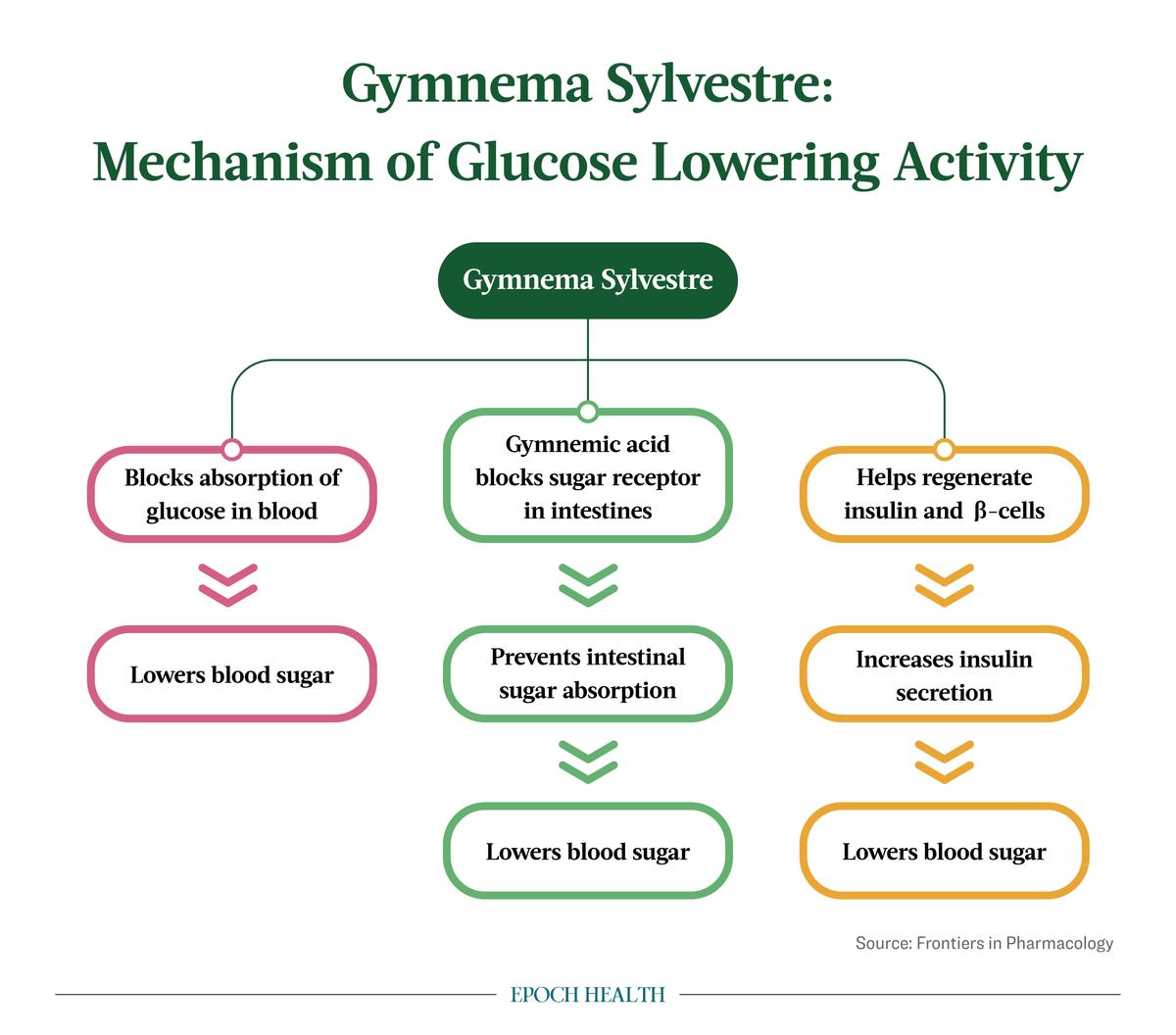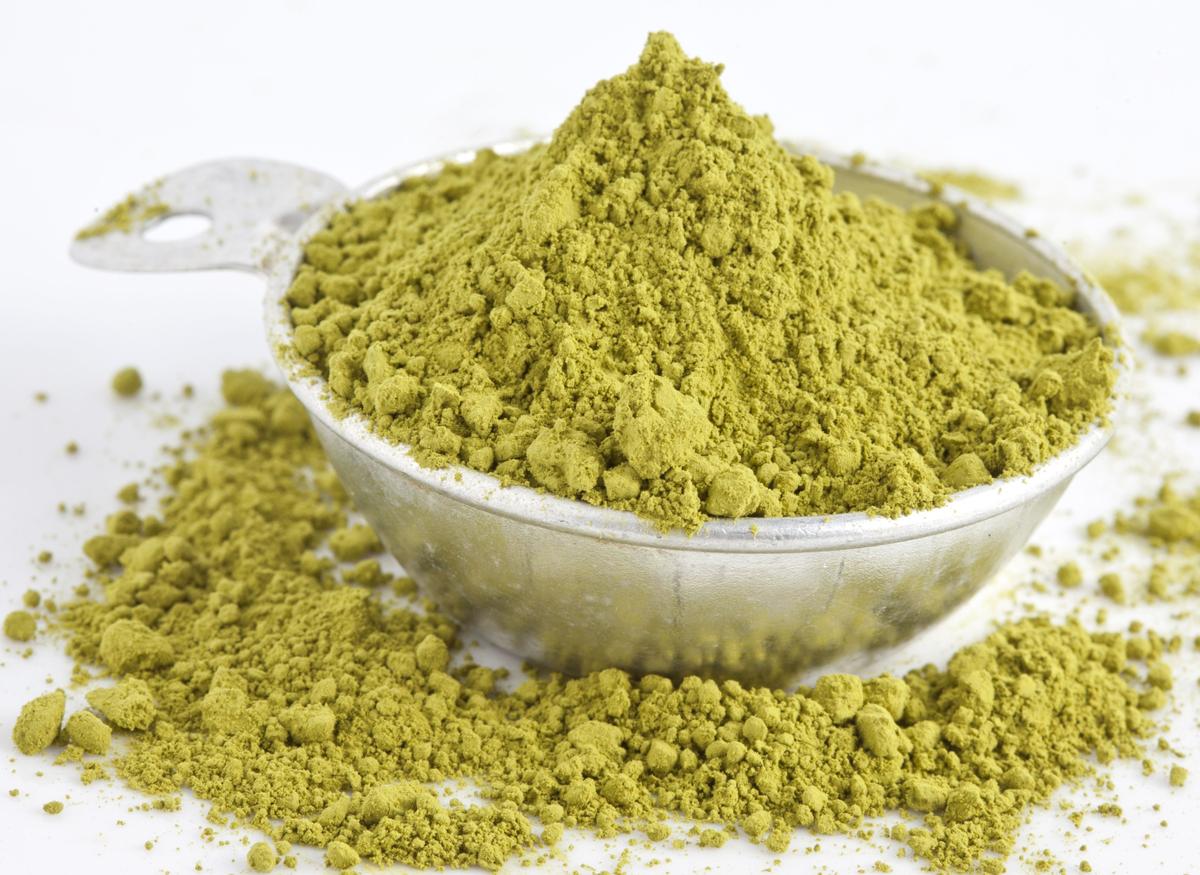
Used in Ayurvedic medicine for nearly 2,000 years, this powerful herb may be an effective adjunct to Type 2 diabetes management.
Medicine’s future is rooted in the past, where nature provided most of our medicines through plants. Today, herbs are making a comeback as medical practitioners and patients recognize their potent therapeutic properties and relative safety compared to pharmaceuticals.
Gymnema sylvestre, an herb used extensively in Ayurvedic medicine, has been prescribed by traditional Ayurvedic practitioners in India to treat diabetes and various other ailments for nearly 2,000 years.
Use in Ayurvedic Medicine
Medicinal plants are a central part of the Ayurvedic system of medicine, an ancient Indian medical system that relies on a holistic physical and mental health approach.
“The Ayurvedic approach is based on the human being’s mind/body and how it corresponds to the five root elements: earth, water, fire, air, and ether,” Jamie Bacharach, a licensed medical acupuncturist, told The Epoch Times in an email.
According to Ms. Bacharach, this Ayurvedic approach is the same today as it has been for thousands of years.
“The main goal of Ayurvedic medicine is to help people live longer, healthier lives without prescription medications,” she said.
Instead, Ayurvedic practitioners use a range of treatments, including yoga, acupuncture, massage, and herbal medicines.
“It’s not everyone’s cup of herbal tea, as it were, but many people find solace, comfort, and healing through its teachings and practices.”
It’s part of the milkweed family and grows in India and parts of China, Africa, Malaysia, and Sri Lanka.

Therapeutic and Clinical Potential
A 2019 comprehensive review of Gymnema sylvestre published in Frontiers in Pharmacology looked at all published studies to date to identify the plant’s phytochemical, pharmacological, and clinical potential.
Phytochemicals are naturally occurring chemicals found in plants. The stems of Gymnema sylvestre contain specific therapeutic compounds, including stigmasterol and triterpenoid saponin.
Stigmasterol, a plant sterol, contains antidiabetic, anti-cancer, antioxidant, and hypoglycemic properties.
Improves Blood Sugar Levels
In 1887, pharmacist and researcher David Hooper published a study in Nature after observing that by chewing on the leaves of the Gymnema plant, one could no longer taste the sweetness of sugar. “Sugar in combination with other … dietetic articles is plainly destroyed as to its taste after using these leaves. In gingerbread [sic], for instance, the pungency of ginger alone is detected; the rest is a tasteless meal,” he wrote.
Mr. Hooper also isolated essential parts of the plant into gymnemic acids, the most important component for lowering blood glucose.
Increases Insulin Secretion
Gymnema stimulates the pancreas to secrete insulin. While that is remarkable in itself, the plant has an additional property that make it a potentially groundbreaking treatment for diabetes.
The pancreas makes insulin. Type 1 diabetics suffer an inability to make this critical hormone and when Type 2 diabetes progress, the pancreas deteriorates and struggles to make enough insulin.
Another mechanism of Gymnemic sylvestre is its ability to block glucose from entering the bloodstream. The molecules that make up gymnemic acid have a similar structure to glucose, allowing it to bind with the sugar receptor site in the intestines and preventing glucose from entering the bloodstream, thus lowering blood sugar.
“When you eat a lot of sugar, you get a rush. But then you crash because of the large amount of insulin released in response to the sugar in the system, and thirty minutes after eating the sugary food, you end up craving sugar again. By binding to the sugar receptor site, Gymnema sylvestre keeps blood sugar from entering the bloodstream and maintains homeostasis in the system,” said Margie Navarro, a licensed acupuncturist and herbalist.
Mechanisms of Antidiabetic Activity
Several mechanisms of action have been proposed to explain the antidiabetic activity of Gymnema sylvestre, including the sugar-blocking effect of gymnemic acids mentioned above.
Gymnema sylvestre also increased insulin secretion, suggesting the possibility of insulin and pancreatic beta-cell regeneration. Beta cells in the pancreas produce and secrete insulin to regulate blood glucose levels.

Ms. Navarro told The Epoch Times that while studies have shown Gymnema sylvestre’s ability to regenerate beta cells, “with Type 1 diabetes, it’s beyond the scope to think you would have a complete turnaround and not need insulin.”
Ms. Navarro and Ms. Bacharach stress that the supplement does not replace prescribed diabetic medications and that people should only take it as an adjunct to a regular diet and exercise regimen that can naturally keep blood glucose and insulin levels in homeostasis.
Very high doses may lower blood glucose to harmful levels and cause weakness, confusion, and dizziness, and it shouldn’t be taken at the same time as other insulin-lowering medications. Patients with diabetes should be under the care of an endocrinologist when taking Gymnema sylvestre, Ms. Navarro advised. “You will want the endocrinologist to monitor how your insulin use changes with supplementation and potentially reduce the daily insulin doses if needed.”
Reduces Sugar Cravings and Aids Weight Loss
Gymnema Sylvestre can also help promote weight loss by controlling blood sugar levels and reducing sweet-cravings. The mechanism that binds with the sugar receptor site in the intestines to block glucose absorption has the same reaction on the tongue to stop the taste of sugar.
“Gymnema sylvestre reduces the metabolic effects of insulin,” Ms. Navarro said. “Reducing the amount of insulin in the blood also regulates the amount of circulating triglycerides that can often cause weight gain around the middle that is typical in metabolic syndrome.”
Lowers Lipids and Triglycerides
Gymnema sylvestre leaf extract also showed potent lipid-lowering properties when administered to female Wister rats. Researchers fed the rats a high-fat diet for four weeks, inducing significant weight gain, increasing LDL and triglyceride levels, and lowering HDL (“good” cholesterol) levels. After four weeks, the rats were divided into groups and given either Gymnema sylvestre or atorvastatin, a standard cholesterol-lowering drug.
After four weeks of Gymnema sylvestre or atorvastatin, the researchers found that Gymnema sylvestre lowered both LDL and triglyceride levels and raised HDL cholesterol.
A 2021 meta-analysis found that supplementing with Gymnema sylvestre could significantly reduce triglycerides in people with Type 2 diabetes.
Similar results were found in a 2023 meta-analysis that concluded that supplementing with Gymnema sylvestre can significantly decrease total cholesterol, triglycerides, and LDL cholesterol, suggesting the potential to improve cardiovascular risk factors.
How to Use Gymnema Sylvestre
There are several different ways to take Gymnema sylvestre. The Gymnema leaves are edible and traditionally have been chewed. Some people make tea with ground Gymnema leaves.

Ms. Navarro suggests using the dried herb form mixed with your coffee in a French press for a lower dosage. “You can also get it as an alcohol-based tincture extract, which will be in a higher dosage range than the dried herb or capsule forms.
Safety and Side Effects
Gymnema sylvestre is generally considered safe for adults when taken in recommended doses. Certain people should avoid taking the herb due to the lack of safety research, including:
- Women who are pregnant or breastfeeding.
- Children and infants.
- People with diabetes (unless supervised by a physician).
- Those with an allergy to milkweed since it’s in the same family.
St. John’s wort has been known to lower blood glucose levels and should not be taken with Gymnema sylvestre.
Important Notice: This article was originally published at www.theepochtimes.com by Allison DeMajistre where all credits are due.
Disclaimer
The watching, interacting, and participation of any kind with anything on this page does not constitute or initiate a doctor-patient relationship with Dr. Farrah™. None of the statements here have been evaluated by the Food and Drug Administration (FDA). The products of Dr. Farrah™ are not intended to diagnose, treat, cure, or prevent any disease. The information being provided should only be considered for education and entertainment purposes only. If you feel that anything you see or hear may be of value to you on this page or on any other medium of any kind associated with, showing, or quoting anything relating to Dr. Farrah™ in any way at any time, you are encouraged to and agree to consult with a licensed healthcare professional in your area to discuss it. If you feel that you’re having a healthcare emergency, seek medical attention immediately. The views expressed here are simply either the views and opinions of Dr. Farrah™ or others appearing and are protected under the first amendment.
Dr. Farrah™ is a highly experienced Licensed Medical Doctor certified in evidence-based clinical nutrition, not some enthusiast, formulator, or medium promoting the wild and unrestrained use of nutrition products for health issues without clinical experience and scientific evidence of therapeutic benefit. Dr. Farrah™ has personally and keenly studied everything she recommends, and more importantly, she’s closely observed the reactions and results in a clinical setting countless times over the course of her career involving the treatment of over 150,000 patients.
Dr. Farrah™ promotes evidence-based natural approaches to health, which means integrating her individual scientific and clinical expertise with the best available external clinical evidence from systematic research. By individual clinical expertise, I refer to the proficiency and judgment that individual clinicians acquire through clinical experience and clinical practice.
Dr. Farrah™ does not make any representation or warranties with respect to the accuracy, applicability, fitness, or completeness of any multimedia content provided. Dr. Farrah™ does not warrant the performance, effectiveness, or applicability of any sites listed, linked, or referenced to, in, or by any multimedia content.
To be clear, the multimedia content is not intended to be a substitute for professional medical advice, diagnosis, or treatment. Always seek the advice of your physician or other qualified health providers with any questions you may have regarding a medical condition. Never disregard professional medical advice or delay in seeking it because of something you have read or seen in any website, video, image, or media of any kind. Dr. Farrah™ hereby disclaims any and all liability to any party for any direct, indirect, implied, punitive, special, incidental, or other consequential damages arising directly or indirectly from any use of the content, which is provided as is, and without warranties.








